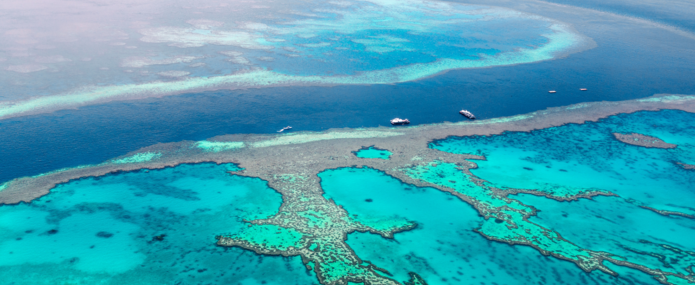The new agreement on the conservation and sustainable use of marine biological diversity in areas beyond national jurisdiction (BBNJ) establishes a dedicated process to establish Marine Protected Areas (MPA). This blog post delves into the question of how the future management of these MPAs will work based on discussions during an online invite-only expert workshop that IDDRI organised on this topic on 27 March 2024.
Paving the way for implementation
The BBNJ agreement sets up a specific procedure to create high seas MPAs, which includes the submission of MPAs proposals by one or several States Parties, an evaluation by a Scientific and Technical Body (STB), a consultation phase and a formal adoption that can be done by a 3/4 majority vote. MPAs proposals must include a “draft management plan encompassing the proposed measures and outlining proposed monitoring, research and review activities to achieve the specified objectives”1 . While these provisions form the backbone of how high seas MPAs will be set up, there are still many unknowns when it comes to their practical management.
The first BBNJ COP will have to decide on the modalities of the operation of the entire institutional framework, such as the STB, that will allow for submission of MPAs proposals. Ongoing efforts to conserve the Sargasso Sea have shown that stakeholder engagement, the collection of scientific and traditional knowledge and the formulation of a draft management plan takes a significant amount of time and resources. That is why States, scientists, civil society organisations, intergovernmental organizations and other stakeholders should not wait for the entry into force of the BBNJ agreement to start preparing proposals for future high seas MPAs. Identifying the right management scenario and anticipating potential operational challenges is key to create and maintain the political support needed to make high seas MPAs work.
Three management scenarios
Experiences of MPAs in waters under national jurisdiction demonstrate that management models are generally based on: (i) specific conservation objectives, most often included in management and enforcement plans; (ii) a specially-created management body with staff of varying sizes; and (iii) a dedicated budget with resources coming from a variety of sources. By contrast, only a handful of MPAs have been established on the high seas, so experience in this regard remains limited. In addition, not all best practices and lessons learned regarding MPAs established at a national level are applicable to a high seas context.
On the high seas, flag States are responsible for effectively exercising jurisdiction and control over vessels flying their flag2 . State parties to the Convention for the Conservation of Antarctic Marine Living Resources (CCAMLR) and the Convention for the Protection of the Marine Environment of the North-East Atlantic (OSPAR) established one of the first high seas MPAs. These MPAs do not have a dedicated management body overseeing what is happening on a daily basis in the MPAs. Rather, the management of these MPAs mainly relies on their members and cooperation and coordination with other relevant regional and international organisations.
Based on what is provided for in the BBNJ treaty and existing practices on the high seas, we can identify three scenarios for the future management of high seas MPAs:
- Scenario 1: business as usual with no dedicated management body and management based on the cooperation and coordination between existing organizations;
- Scenario 2: a centralised management model through one body competent for all high seas MPAs, e.g. under the BBNJ Secretariat;
- Scenario 3: a decentralised model with one management body per MPA that will either be housed in an existing regional or sectoral organization or via an organization that will be specifically created.
The feasibility and desirability of each scenario is something that State Parties to the BBNJ agreement can already start thinking about. Should a dedicated management body be set up for each of the future high seas MPAs? Should these bodies be specially created, or could they be housed within existing organizations? What will be the staffing requirements? Would a centralised management mechanism of all high seas MPAs be preferable, for instance through the future treaty secretariat? What would be the advantages and limitations of each scenario? What are the consequences on the relations with existing competent organizations?
The most appropriate solution will certainly depend on the institutional context in which the MPA is created, but, in any case, it seems essential to have a management mechanism and/or dedicated staff to coordinate with relevant intergovernmental organizations (e.g. the International Maritime Organization and regional fisheries management organisations). The BBNJ agreement is not supposed to undermine existing organizations and thus cooperation and coordination is key for the effectiveness of future high seas MPAs. At the same time, some global centralized oversight mechanism would help integrate transparency and inclusivity considerations.
Collective management vs individual leadership
As the high seas are a global common, MPAs must be managed through intergovernmental cooperation mechanisms. However, some States are more active than others depending on their political will and capacity. The experience of existing high seas MPAs shows that their management relies both on collaborative mechanisms and the contributions of certain States. In the CCAMLR context, for example, individual members provide in-kind contributions such as patrolling with vessels or planes as well as research activities in the region. The degree of their contributions is often based on their national budgets as well as their individual geopolitical, economic or defence interests.
The question is therefore how to balance the need for collective management with the specific contribution of individual countries. Whereas some States adjacent to sites proposed for high seas MPAs might be willing to play a championing role (in terms of funding, in-kind, or means of control, for example), the proponents cannot be expected to play a bigger role in terms of funding or enforcement as this might discourage potential proponents from submitting a proposal in the first place. There is no standardized methodology for political leadership, so building relationships and keeping the interest going for high seas MPAs is essential.




